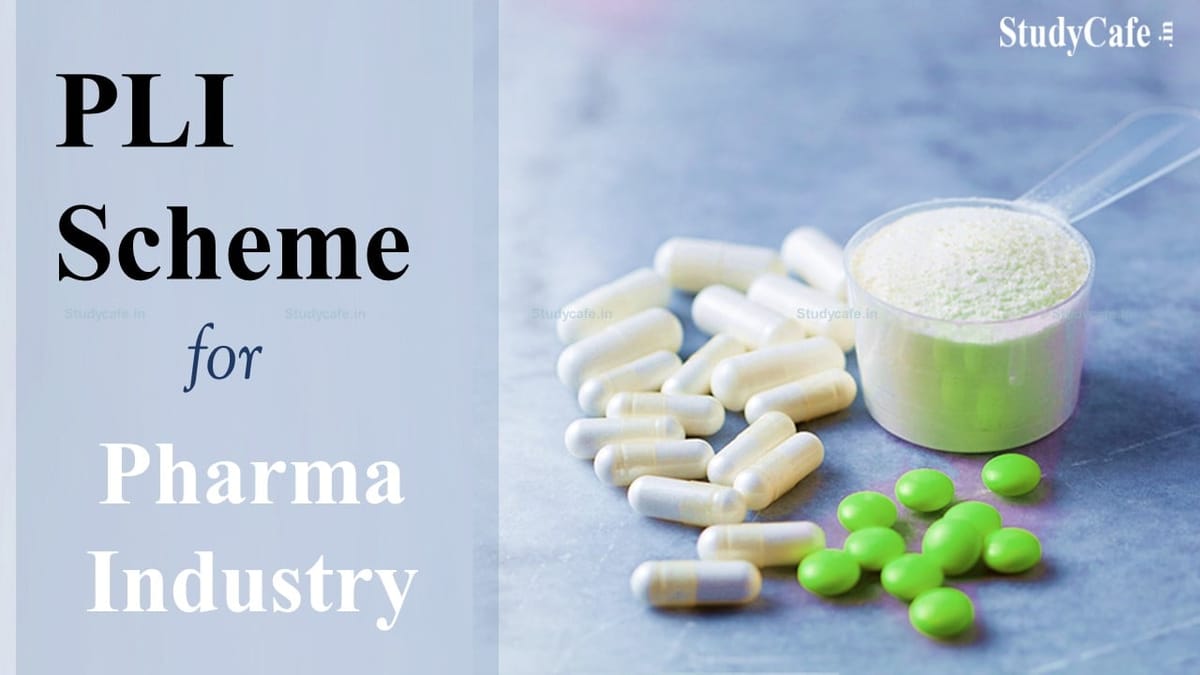CS Lalit Rajput | Dec 1, 2021 |

PLI scheme for the Pharmaceutical Sector
A Production-Linked Incentive, or PLI scheme, provides incentives in the form of tax rebates, import and export duty concessions, or maybe easier land-acquisition terms etc. to companies in order to boost domestic manufacturing. This is done by the government in an effort to make products more competitively priced, reduce a country’s dependence on imports and generate employment. PLIs are essentially the incentives to companies to boost product.
The PLI Scheme for Pharmaceuticals is based on the strategy of “Atmanirbhar Bharat. The Operational Guidelines for the scheme inviting applications from the pharmaceutical industry were issued on 01.06.2021 by the Department of Pharmaceuticals after intensive consultation with industry and related departments and NITI Aayog.
1. Presently 55 companies have qualified for the production linked incentive (PLI) scheme for the pharmaceutical sector.
2. The list of Qualified Companies as mentioned above includes such big players as Sun Pharmaceuticals, Cipla, Dr Reddy’s Laboratories, Glenmark Pharmaceuticals, Wockhardt, Biocon, Biological E, Panacea Biotec, Torrent Pharma, Aurobindo Pharma, Intas Pharma, Natco Pharma and Lupin.
3. The scheme will provide financial incentives of ₹15,000 crore on the incremental sales of pharmaceutical goods and in-vitro diagnostic medical devices to these companies over six years.
4. SIDBI is the project management agency and has put in place a digital mechanism for business processes being followed under the scheme.
5. The beneficiaries approved for the scheme also include 20 MSMEs (micro, small and medium enterprises), according to a Ministry of Chemicals and Fertilisers release.
6. The scheme covers three different product categories as mentioned below:
| Category 1 | Category 2 | Category 3 |
| Biopharmaceuticals; Complex generic drugs; Patented drugs or drugs nearing patent expiry; Cell based or gene therapy drugs; Orphan drugs; Special empty capsules like HPMC, Pullulan, enteric etc.; Complex excipients; Phyto-pharmaceuticals. | Active Pharmaceutical Ingredients / Key Starting materials / Drug Intermediates (except the Active Pharmaceutical Ingredients / Key Starting materials / Drug Intermediates covered under the earlier PLI scheme for APIs/KSMs and DIs being implemented by the Department) | (Drugs not covered under Category 1 and Category 2): Repurposed drugs; Auto immune drugs, anti-cancer drugs, anti-diabetic drugs, anti-infective drugs, cardiovascular drugs, psychotropic drugs and anti-retroviral drugs; In vitro diagnostic devices; Other drugs not manufactured in India. |
7. The detailed scheme guidelines available on the website of the Department at: Click Here
8. The Group A consists of 11 selected applicants, Group-B consists of 9 selected applicants and Group-C consists of 35 selected applicants of which there are 20 MSMEs.
9. The selection of applicants in each of the three categories has been approved by the Minister for Chemicals and Fertilizers.
10. A robust monitoring framework will also be put in place to track the progress of the scheme.
Disclaimer: Every effort has been made to avoid errors or omissions in this material. In spite of this, errors may creep in. Any mistake, error or discrepancy noted may be brought to our notice which shall be taken care of in the next edition. In no event the author shall be liable for any direct, indirect, special or incidental damage resulting from or arising out of or in connection with the use of this information.
In case of any Doubt regarding Membership you can mail us at contact@studycafe.in
Join Studycafe's WhatsApp Group or Telegram Channel for Latest Updates on Government Job, Sarkari Naukri, Private Jobs, Income Tax, GST, Companies Act, Judgements and CA, CS, ICWA, and MUCH MORE!"